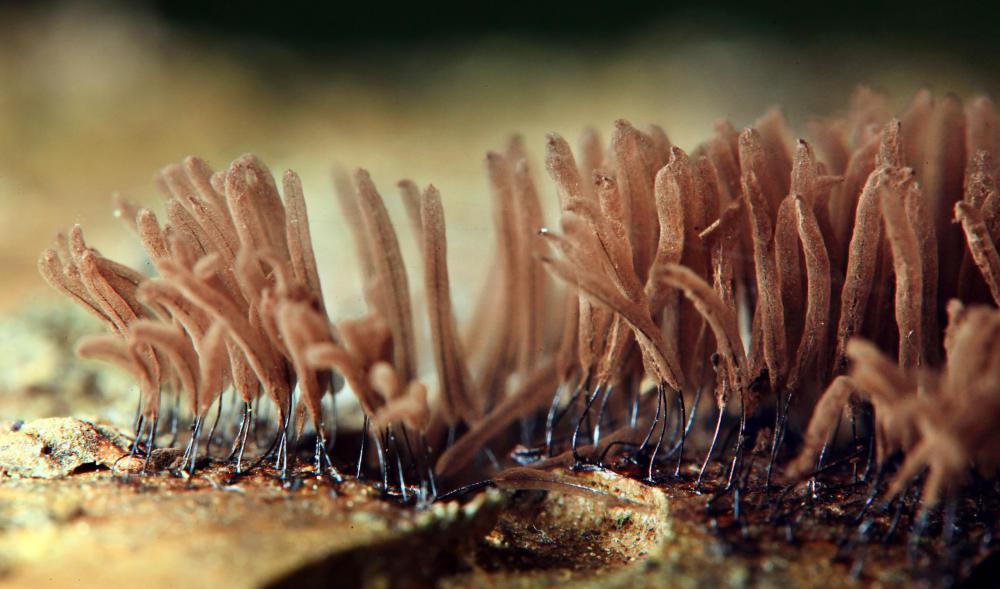At DelightedCooking, we're committed to delivering accurate, trustworthy information. Our expert-authored content is rigorously fact-checked and sourced from credible authorities. Discover how we uphold the highest standards in providing you with reliable knowledge.
What is Honey Fungus?
Honey fungus, or Armillaria mellea, is a type of mushroom which can usually be found on the stumps and branches of dead trees. In some cases, the mushroom is also parasitic on living plants, which will ultimately kill them. For this reason, many gardeners profoundly dislike the fungus, despite its value as a flavorful edible mushroom. Depending on your stance on this mushroom, you may be either horrified or delighted to find a patch. If you are collecting these for food purposes, be very cautious, as several toxic species strongly resemble honey fungus and misidentification can lead to stomach upset or potential neurological damage.
Honey fungus spreads via rhizomorphs, long roots which spread out from the mycelium, the main body of the fungus. The rhizomorphs take the form of long, slender black taproots, which resemble shoelaces. The mycelium is a thick white mat of material, usually found underneath bark or surrounding the roots of a plant. When stimulated to grow in the fall, the mycelium emits fruiting bodies, which take the form of honey colored classically shaped mushrooms that can grow as large as eight inches (20 centimeters). The cap has a darker center, lightening to gold at the edges, and small scales, with a white spore print. This mushroom is among the largest living organisms in the world, with some specimens recorded as having a mycelium that stretches for miles.

This fungus can also be a very long lived mushroom if it is not eradicated by human intervention. Humans have had a long history with honey fungus, and the mushroom has been written about for thousands of years. In addition to being parasitic and edible, honey fungus is also bioluminescent, and can cause a faint glow in the forest at night. In forests with large colonies, the glow can be quite distinctive in the fall, when the mushroom produces fruiting bodies.

This mushroom should not be eaten raw, due to rare allergic reactions which can occur. Once cooked, however, the mushroom is perfectly safe with an earthy flavor that is quite tasty sauteed and served plain, or added to pasta dishes, stuffings, and stir fries. Specimens for consumption should have an even color and firm texture, with no soft or slimy spots, and can be stored in a paper bag in the fridge for up to one week. Before use, the mushrooms should be gently brushed to eliminate dirt.

If honey fungus is colonizing your garden, rapid action needs to be taken. All colonized plants and trees should be torn out and destroyed so that the fungus cannot spread. In addition, you may want to consider treating the garden with products designed to retard the growth of the fungus. Some gardeners also recommend lining beds with thick plastic to protect plants from infection. To prevent infection, make sure to plant on well drained clean soil, and provide proper nutrition. This mushroom thrives on starved plants and in damp or waterlogged areas.
AS FEATURED ON:
AS FEATURED ON:













Discuss this Article
Post your comments